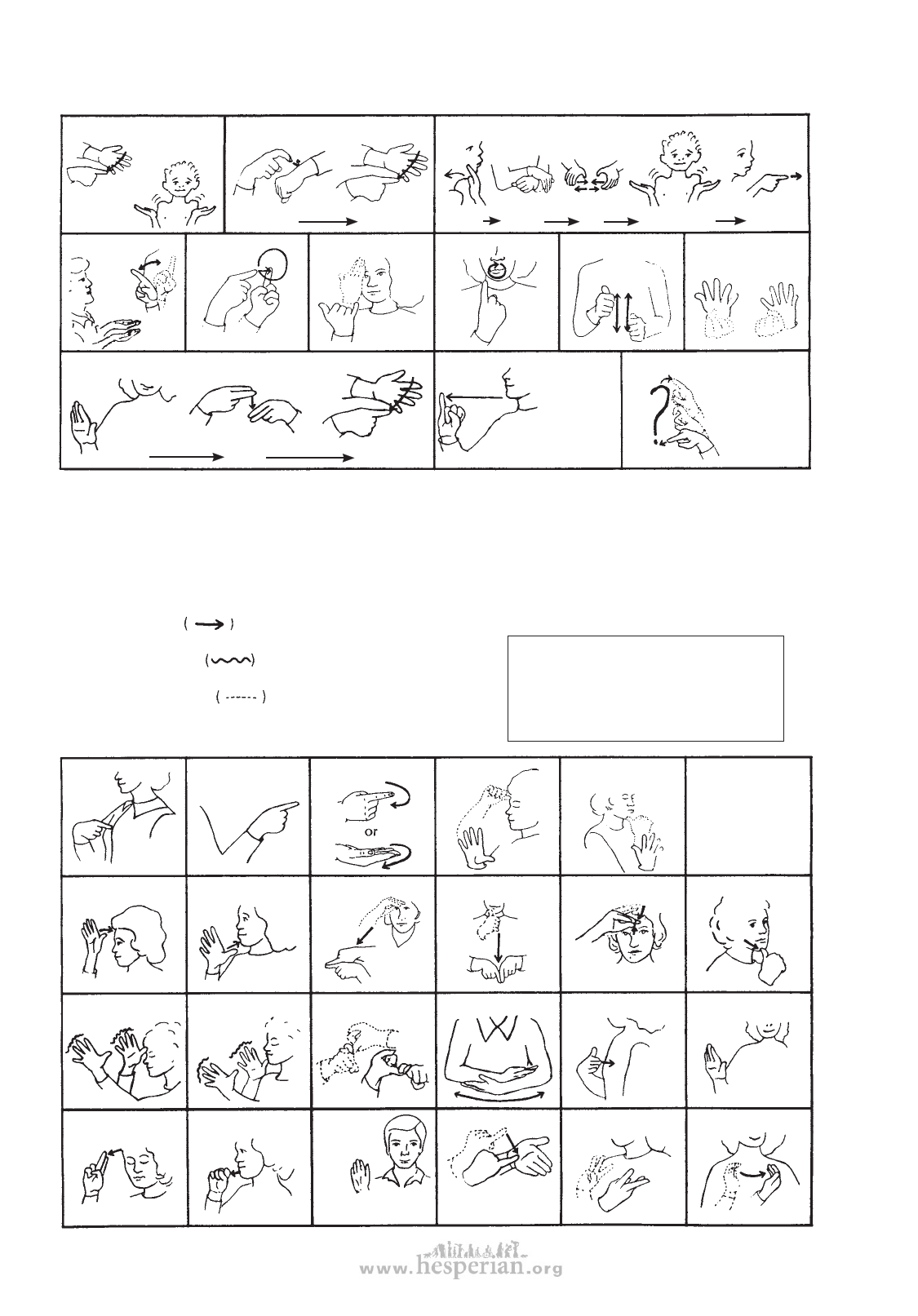
270 chapter 31
HOW TO ASK QUESTIONS
WHAT?
What time is it?
What did you do last night?
or
WHERE?
WHEN?
TIME?
WHAT
WHY?
PAST
WHO?
NIGHT
DO
WHICH?
WHAT shrug YOU
HOW MANY,
HOW MUCH?
What is your name?
YOUR
NAME
IS
WHAT?
Note: ‘Is’,
QUESTION MARK
‘are’, ‘am’,
Use before
‘was’, and
or after a
‘were’ are
often not used,
as in “What is
your name?”
statement to
turn it into
a question.
(motion of
milking cow)
EXAMPLES OF SIGNS
The signs shown here are mostly used in the United States (American Sign Language). A few are
from Nepal, Jamaica, and Mexico, because these seem easier to understand. We have chosen signs for
things and actions that should be useful for early learning and group games with children. We include
them mainly to give you ideas. Change and adapt them to better fit your area.
• Arrows
in the drawings show the direction
of hand movement to make the sign.
• Wavy lines used with a sign mean a shake of
the hand or fingers.
• Dotted lines show how the sign
looks when it begins.
• The darker sign is how it looks when it ends.
Note: A few signs shown here are based
on letters of the alphabet (for example,
‘it’ uses the letter T, and ‘we’ the letter
‘W’). Change these signs if you speak
a different language, or if you want to
avoid signs based on letters.
I, ME
YOU
THEY, THEM
MALE
(MAN)
FATHER
MOTHER
BROTHER
SISTER
FEMALE
(WOMAN)
BOY
Note: The male
and female
signs are used
as the base to
make signs for
boy, girl, father,
mother, etc.
GIRL
GRANDFATHER
GRANDMOTHER
FRIEND
BABY
MY
YOUR
HE, HIM
SHE, HER
HIS, HER,
THEIR,
YOUR
IT
Direct sign
toward person.
Or point
to object.
Disabled village Children
WE
OUR